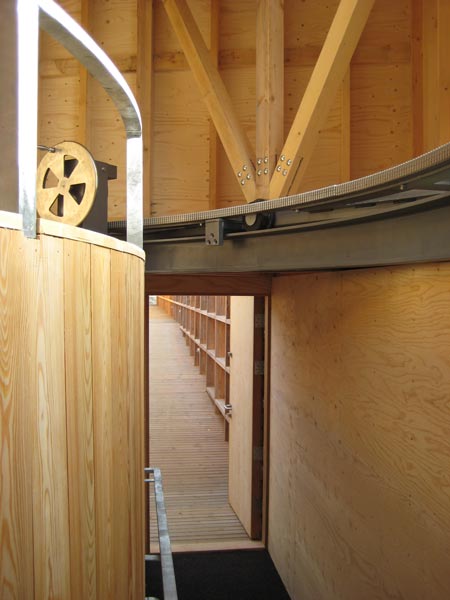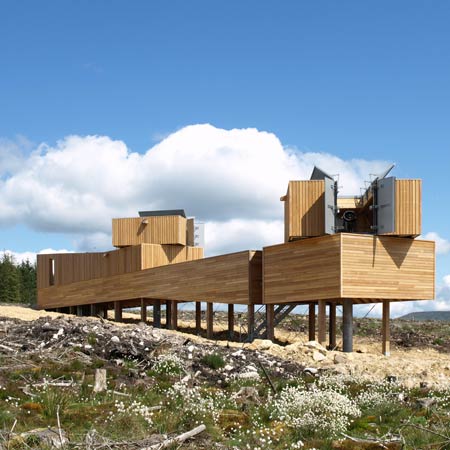
Kielder Observatory by Charles Barclay Architects
Charles Barclay Architects have completed the Kielder Observatory in Northumberland, UK.
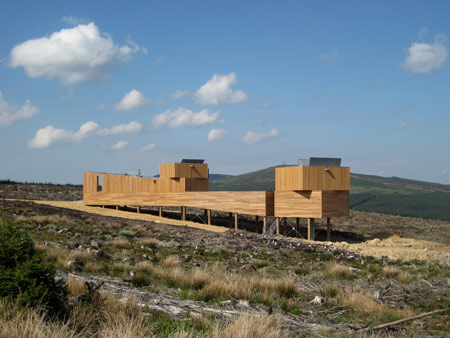
Constructed from douglas fir with larch cladding, the pier-like building has rotating turrets that house two permanent telescopes and an observation deck for private telescopes.
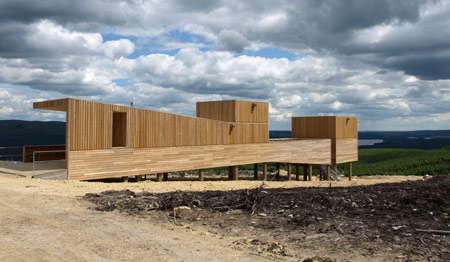
The turrets can be rotated through 36o degrees using a manual rack and pinion system.
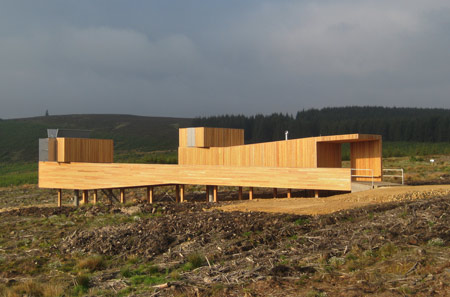
The observatory generates its own energy using a wind turbine and photovoltaic panels, and includes a composting toilet.
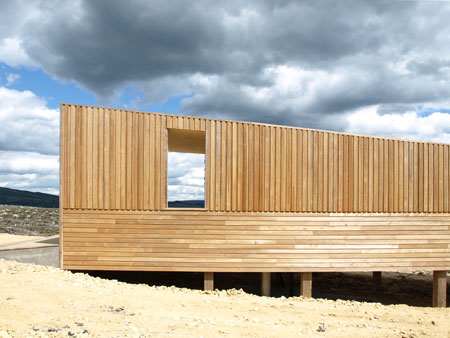
The following information is from Charles Barclay Architects:
--
Completion of Kielder Observatory, Kielder Water and Forest Park, Northumberland, UK.
Charles Barclay Architects' recently completed Kielder Observatory is the latest in a series of interesting commissions by the Art and Architecture programme at Kielder, Northumberland, after the London practice won a RIBA open competition in 2005. Kielder's lack of light pollution makes it an excellent place for astronomers to view the night sky.
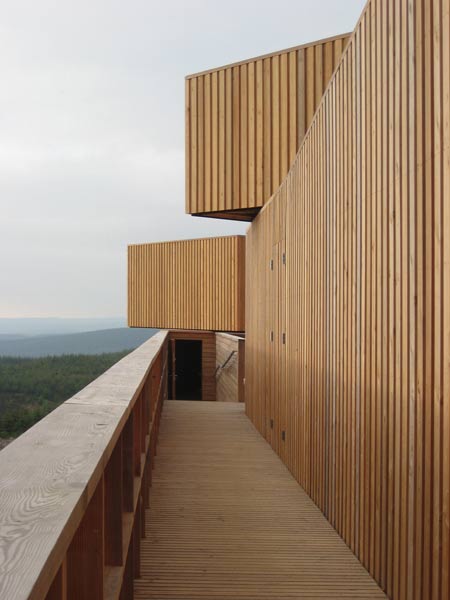
The observatory is in the form of an all-timber 'land pier', jutting out over the rough landscape of Black Fell. Designed specifically for amateur astronomers and outreach work, the accessible pier form includes an observation deck for private telescopes at night and for looking over Kielder Forest by day. The observatory is orientated south east towards its sister project, the nearby Kielder Sky Space by James Turrell.
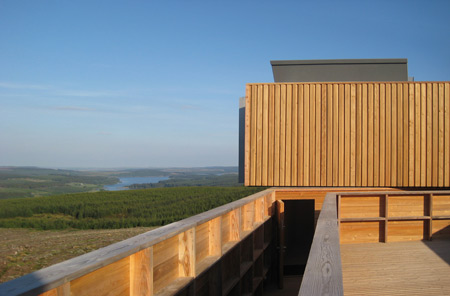
The elevated structure touches the ground lightly while providing an excellent vantage point. The Douglas fir frame and larch cladding serve as reminders of the Kielder Forest's economic role and relate to the timber structures of the former local mining industry, pit props and trestle bridges.
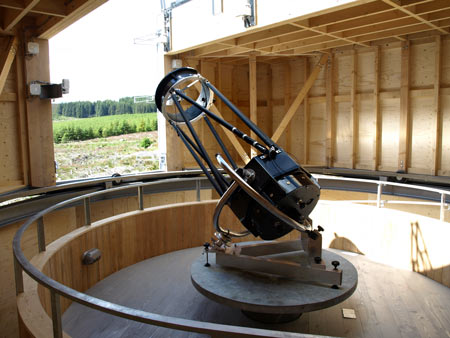
By day, the building is mysterious and formal in its forest setting; when opened up for observing, the rotated turrets and opened shutters make it expressive and dynamic.
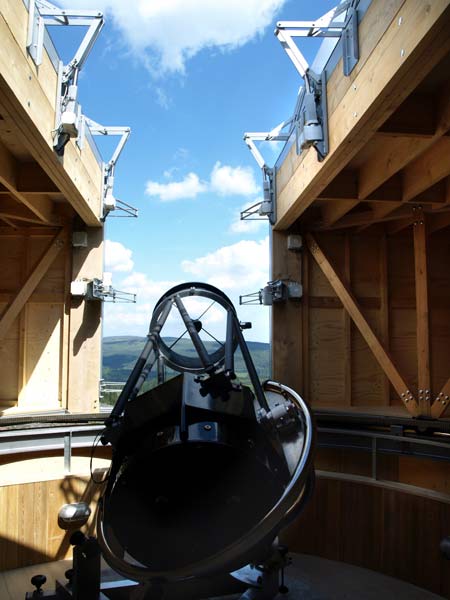
The observatory houses two permanent telescopes, a computer-operated Meade 14 inch in the small turret, attached to a warm room where astronomers can operate it remotely, or give talks to groups of visitors. The large turret, the pier 'destination', houses a manual 20 inch split-ring equatorial telescope for the hands-on experience, accessed by a circular ramp.
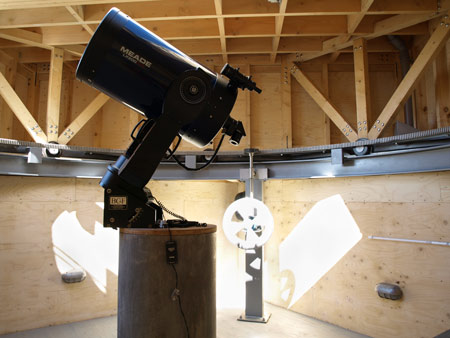
The observatory is entirely self-supporting, with power generated by a 2.5kW wind turbine, roof-mounted photo-voltaic panels and a composting WC. The shutters are opened by means of servo-operated hydraulic pistons and the turrets, the larger one weighing in at 6 tonnes, are rotated by a manual rack and pinion system.
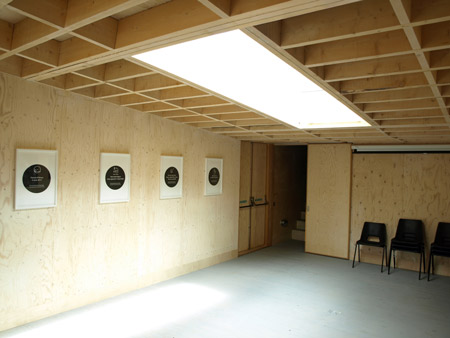
The observatory is on Forestry Commission land and has been handed over to the Kielder Observatory Astronomical Society who are running regular events there throughout the year.
